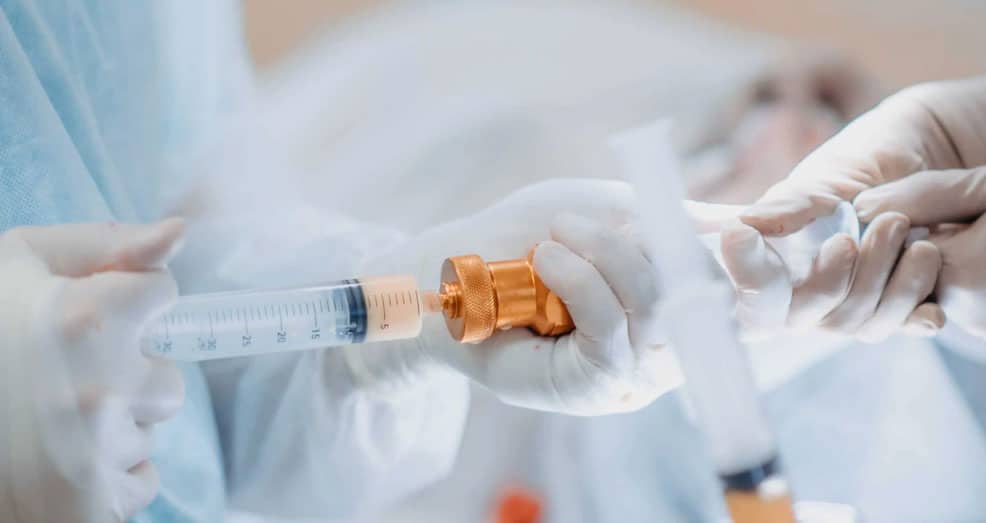It is normal to feel anxious, sad, and uncertain after a mastectomy. It is reassuring however to know that there are options for reconstructing the breast. Once you have been diagnosed with breast cancer or you are at a high risk of developing it in the future, your doctor talks to you about rebuilding your breast or breasts through a surgery called breast reconstruction.
In the process of diagnosis, treatment, mastectomy and reconstruction three different doctors. The oncologist diagnosis and treats the cancer. The general surgeon or breast surgeon removes the breast (mastectomy) and the plastic surgeon or reconstructive surgeon rebuilds or reconstructs the breast. Breast reconstruction in Dubai is conducted by highly skilled and trained plastic surgeons and can often be done immediately after the mastectomy, so the patient does not need to see herself without breasts.
What is breast reconstruction surgery?
Breast reconstruction surgery entails reforming or reshaping one or both breasts after a lumpectomy or mastectomy.
A lumpectomy involves removing a breast section that contains a smaller tumour.
A mastectomy is the surgical removal of the entire breast, which may include the nipple and areola to prevent or treat breast cancer.
Deciding to have Breast Reconstruction Surgery
Undergoing breast reconstruction surgery is a personal choice. Many individuals apart from experiencing severe self-image problems and anxiety following a mastectomy also tend to mourn the loss of their breasts. It is for some of these reasons that they may choose to undergo breast reconstruction surgery.
Once you’ve made the ultimate decision to undergo the procedure, there are other factors to consider such as:
- When to have the surgery
- The type of surgery to have
- If to have surgery on both breasts so as to match the reconstructed breast to the other breast
The person’s body type is among some of the factors which help in determining the best kind of breast reconstruction. Other factors include:
- Location, severity and type of cancer
- Overall health of the patient
- Type of cancer treatment received
- If the surgery is necessary on one or both breasts
- The number of surgery the patient is willing to have
- How quickly the person wishes to recover from the surgery
There are many factors which can help in determining the most suitable type of breast reconstruction, but the two main options are:
- Autologous or flap surgery. This method involves the use of tissue from another part of the body.
- Implants. This involves the use of saline or silicone implants.
Some cases however require the surgeon to combine both techniques to create a more natural reconstruction of the breast or breasts.
Breast reconstruction may take place at the time of lumpectomy or mastectomy in which case it is known as immediate reconstruction. However, a person might choose to undergo the reconstruction surgery after the cancer treatments are complete and the mastectomy has healed. This is known as delayed reconstruction.
Options
Autologous or flap surgery
With this procedure, the surgeon uses tissue from another part of the body and moves it to the chest to reconstruct the breast. The tissue can be removed from the abdomen or from other places on the body such as the back, buttocks or thighs.
The flap surgery is a highly complex surgery as it involves transferring tissue from one part of the body to the other. There are two techniques available for this surgery:
- Free flap surgery
- Pedicle flap surgery
In free flap surgery, the surgeon completely removes the tissues as well as the blood vessels that provide it with circulation for placement in the breast. The blood vessels are then reconnected to other blood vessels in the chest at the intended site of placement.
In pedicle flap surgery, the surgeon does not entirely remove the transplanted tissue from its blood vessels. Instead, the tissue remains attached to the body and it is rotated into the chest to form the breast. The tissue used is usually from the abdomen or back.
Implants
During breast reconstruction with implants, the surgeon inserts saline or silicone implants underneath the skin or muscle, in place of the previous breast tissue.
This is usually a two stage procedure for most people. The first stage involves the surgeon placing a tissue expander underneath the remaining breast skin or pectoralis muscles. The expander serves as a temporary saline implant which gradually stretches the remaining tissue.
Following the surgery, after the person has fully healed, the surgeon injects sterile saline through the skin into the tissue expander on a weekly basis. This makes the balloon to grow gradually, stretching the overlaying muscle and skin until the breast reaches a size that the patient is comfortable with.
The second stage involves the surgeon removing the tissue expanders and replacing them with either saline or silicone permanent implants. This procedure does not leave new scars since the surgeon usually opens the original scar.
In some cases the surgeon may place permanent silicone or saline implant at the time of the mastectomy, without the use of a tissue expander but with the use of a biologic mesh to cover the implant.
Additional techniques may be used to help the surgeon reconstruct the nipple and surrounding area if cancer treatment has affected them.
Recovery
Breast reconstruction is a major surgery and a person can spend several days in the hospital. Flap surgery usually has a longer recovery time than reconstruction using implants.
For both surgeries, the patient is unable to perform most daily activities for about 4 to 6 weeks. You may experience fatigue, pain, bruising, swelling, soreness and restriction of movement such as lifting the arms overhead. Pain medication is normally prescribed to ease the pain and the patient may be advised to wear a support bra to reduce the swelling.
Drainage tubes will likely be placed following the surgery to collect excess fluids and blood.
Risks and complications
Some of the complications that the patient may experience include:
- Infection
- Bleeding or blood clots
- Fluid build-up at the donor site or in the breast
- Extreme fatigue
- Disrupted or slow wound healing
It is important to tell your surgeon when you notice anything that worries you or out of the norm during the recovery. For optimal results, the patient should follow the aftercare instructions provided and go for follow-up appointments.
Book your appointment for a consultation
Would you like to understand what options are available for breast reconstruction in Dubai? Meet one of our experts at Al Shunnar Plastic Surgery for a personal consultation to develop a tailor-made plan for you. Contact us or Book an appointment and our patient care coordinators will identify the most suitable expert for you.



